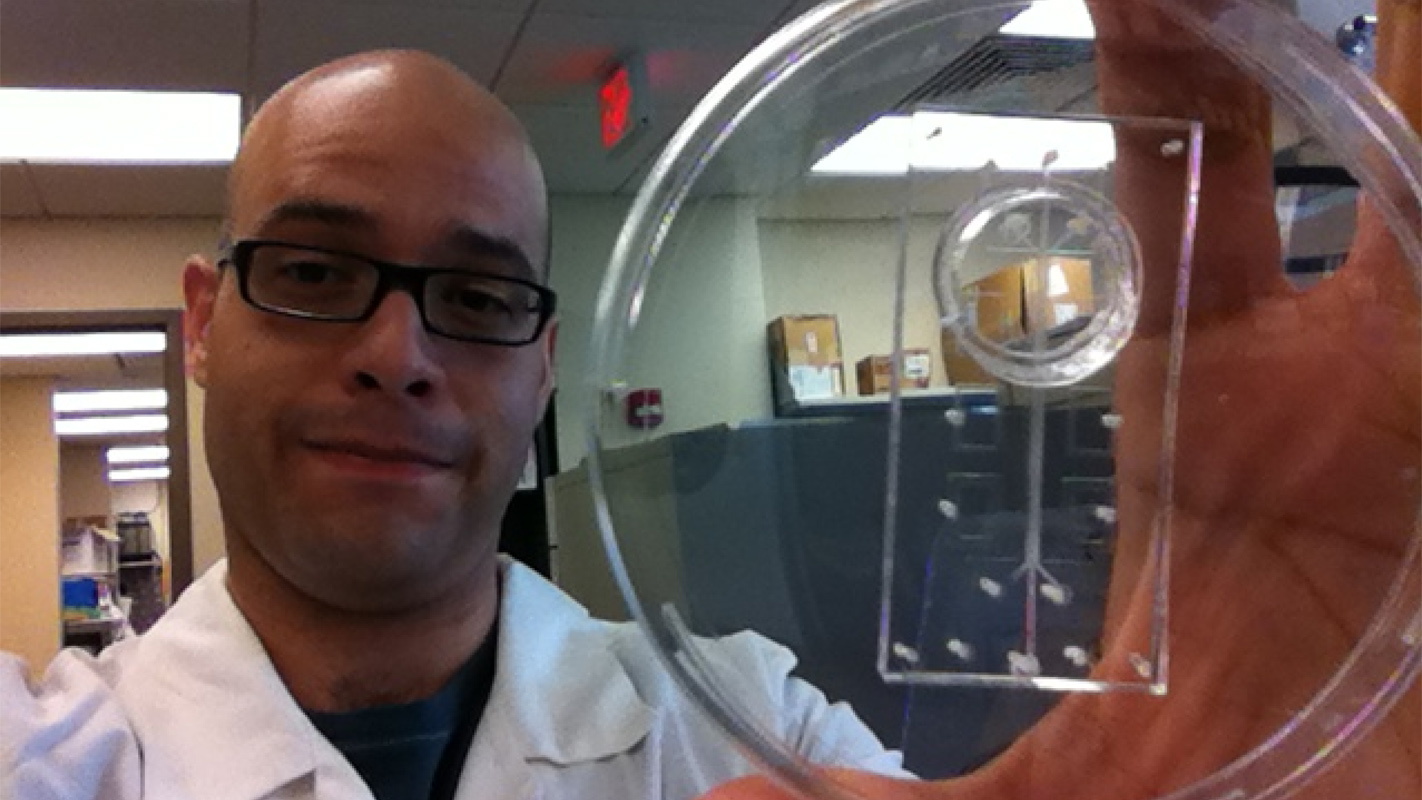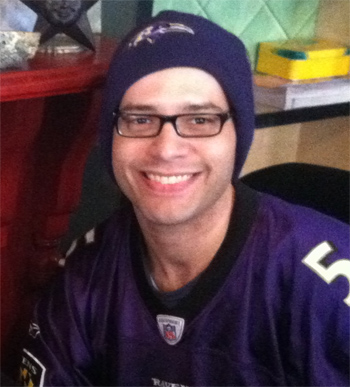This Is What Science Looks Like at NC State: Miguel A. Acosta

Editor’s note: This post was written by Miguel A. Acosta, a post-doctoral researcher in Biomedical Engineering at NC State. The post is an entry in an ongoing series that we hope will highlight the diversity of researchers in Science, Technology, Engineering and Mathematics (STEM). The series is inspired by the This Is What A Scientist Looks Like site.
I am originally from San Juan, Puerto Rico. I possess a B.S. in Chemical Engineering from the University of Puerto Rico at Mayagüez (UPRM) and a Ph.D. in Biochemical Engineering from the University of Maryland Baltimore County (UMBC). I relocated to NC State, from Baltimore, in September of 2012 to begin post-doctoral work within the UNC/NC State Joint Department of Biomedical Engineering, with Dr. Michael Gamcsik.

My work concerns the development and characterization of microfluidic devices to study cancer. Microfluidics is a multidisciplinary field at the intersection of engineering, physics, chemistry, and biology, and focuses on designing systems for manipulating small volumes of fluids. By manipulating fluids at the micro-scale, scientists have more precise control of the physical and chemical properties relevant to their experiments. As a result, microfluidic devices are used in a broad range of scientific and commercial applications, from drug resistance studies and the recreation of the physiological environments seen within organs and tissues, to point-of-care devices that can diagnose diseases like the flu, tuberculosis, and malaria.
Specifically, I have developed a device that allows us to incite the migration of tumor cells through a membrane that mimics tissue lining by changing the concentration of oxygen in their surrounding environment. The migration of tumor cells through surrounding tissues, which later allows the cells to enter a patient’s bloodstream, is part of the series of phenomena that trigger cancer metastasis and as such, it is of great interest in cancer research.
In the past, it has been demonstrated that tumor oxygenation is constantly changing. This is due to the fact that the blood vessels that tumors develop on their own is abnormal and can’t deliver enough nutrients and oxygen to the cells. Additionally, as a tumor grows in size, what little oxygen it gets is quickly consumed by the cells that are in close contact with these blood vessels, literally asphyxiating the cells in its center. This phenomenon drives cells to aggressively escape the tumor and enter the patient, causing the tumor to spread to other organs and, ultimately, making the disease more fatal. Understanding this process is an important step in finding ways to limit the spread of cancer.
I enjoy this work because it combines a wide array of tools from engineering, chemistry, and biology to achieve elegant solutions to real scientific problems. In our case, no bench-top platform exists that can mimic oxygenation patterns observed within tumors and demonstrate the control that oxygen concentration can have over cell behavior, making our device the first of its kind. It is also this combination of disciplines that makes the topic challenging and rewarding, because I get to learn and employ techniques from many fields of study.
Aside from my work, I am proud to be able to represent Puerto Rico within the scientific community. I hope that my continued success can be an example to Puerto Rican engineers and scientists to pursue their dreams. Finally, on a personal level, I am a die-hard Baltimore Ravens and Baltimore Orioles fan. I also love heavy metal music, reading fantasy and science-fiction, and spending my weekends finding ways to apply my knowledge of chemistry to sharpen my baking skills.
- Categories:


